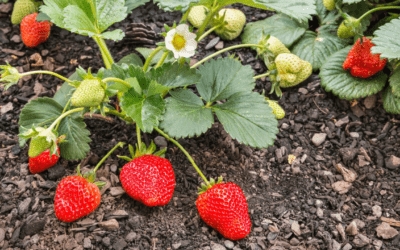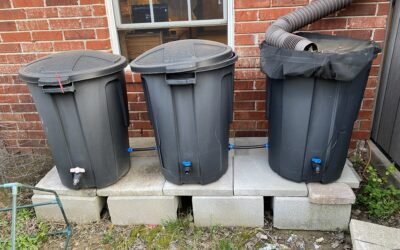Composting is the breaking down of organic matter. It’s the natural process of organic materials as they de-“compos”e.
The United States Department of Agriculture estimates that 30-40% of food in the United States goes to waste. All food has an ecological footprint. When we waste food, we waste the energy and natural resources that went into production, and contribute to landfills that produce greenhouse gases.
Many people want to begin composting, especially when they realize the terrible impact we have had on our planet. But so many feel overwhelmed or just aren’t sure where to start. A lot of people start with a small kitchen bin to collect leftover food scraps that can then be turned into nutritious soil for their garden.
But what do you do with those scraps as you collect them? There are many ways to create an active compost pile. Today we are only going to talk about hot composting and cold composting. The most common method for backyard composting is either a rotating bin of some sort or you can build a standing bin on your own. We’ll discuss bins in another article. Below are the 3 different bins we use in our backyard Garden.
The quickest way to create compost is by adding the right ratio of ingredients. Experts typically recommend 75% carbon (or brown/dry ingredients) to 25% nitrogen (or green/wet ingredients) while others suggest its better to add 1/3 nitrogen to whatever carbon mixture you have. Either way, it’s going to break down over time.
Below is a list of what constitutes a brown or green ingredient.

The key ingredients for a compost pile are Carbon, Nitrogen, Air and Water.
Although your pile will eventually breakdown even if you don’t have the right ratio (this is called cold composting), there are some things you can do to “activate” or heat up your pile for faster decomposition (or composting).
If your pile is beginning to smell, you probably need to add more carbon or brown items. This usually indicates the pile is too wet. Carbon items will help dry it out.
You also need to make sure you are rotating the ingredients about once a week. Don’t let the pile dry out too much or the decomposing process will slow down drastically.
If your pile isn’t heating up, it could indicate you need to add more nitrogen or green material.
I know this sounds confusing and like a lot of work but that’s where Garden of Eden Composting comes in. When you subscribe to our services, we provide you with a compost bin AND we do the composting for you.
You never have to worry about the right ratios or rotating the pile or creating a bad smell that offends your neighbors. You simply toss your compostable waste in to the bucket we provide. Once a week you place your bucket on your front porch on your designated pickup day. We pick up the bucket and replace it with a clean, sanitized bucket so you can continue collecting your waste for the next week. Weekly pickup keeps you from dealing with odors.
After we pickup your bin each week the contents are weighed and added in to one of our active compost piles where we rotate and aerate it until the composting is completed. Once it is finished, it is moved to our store room where it is left to cure for two weeks.
Once you have been an active customer of Garden of Eden Composting for 3 months, you will be offered a free bin of compost for your own garden. Customers receive a free bin in both the Spring and the Fall.
You still get to do your part to help the environment AND you still get your own finished compost, but you don’t have to deal with any of the work!







0 Comments